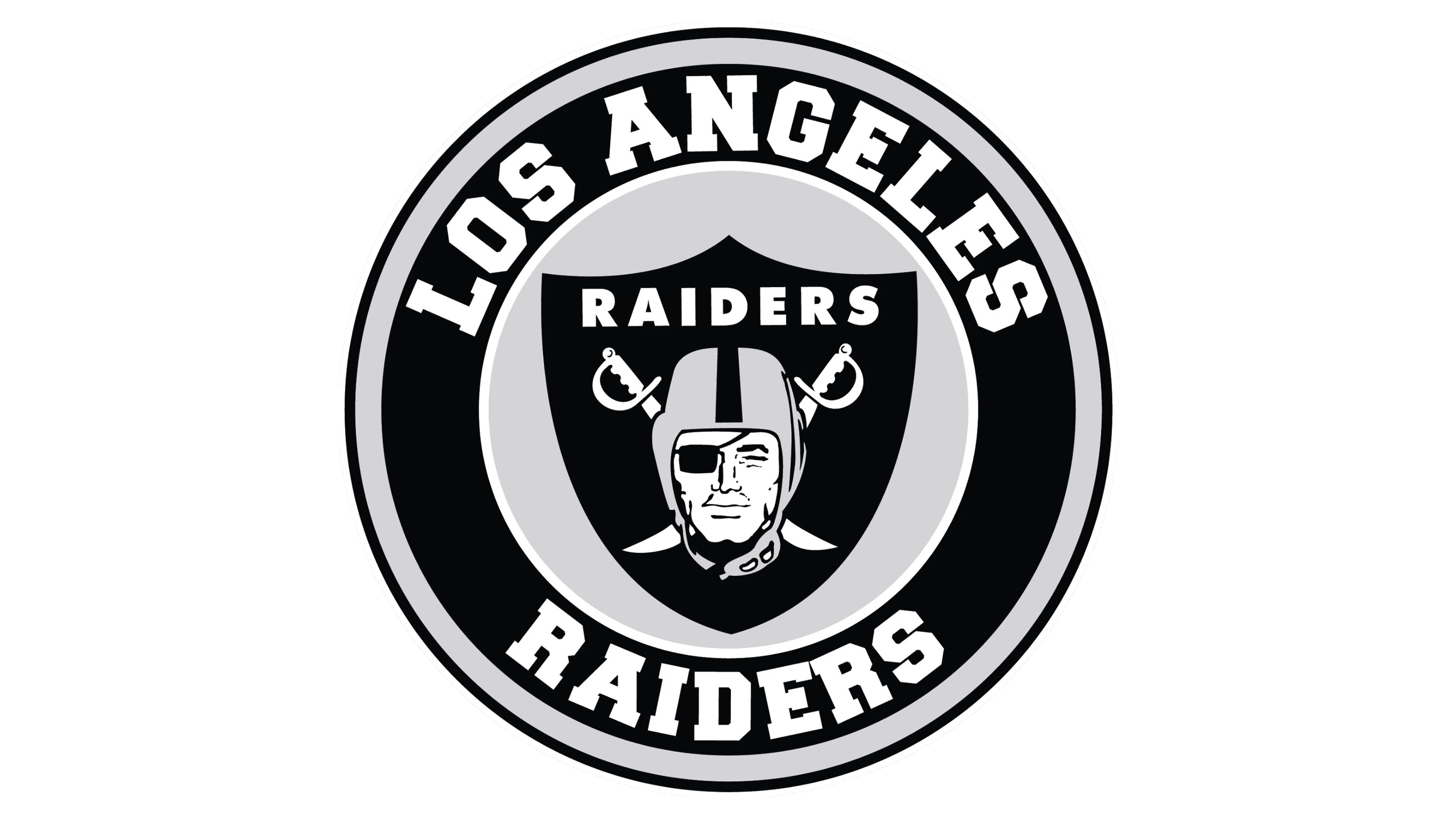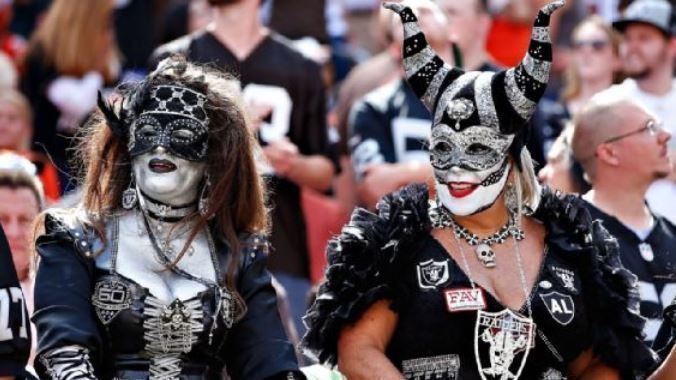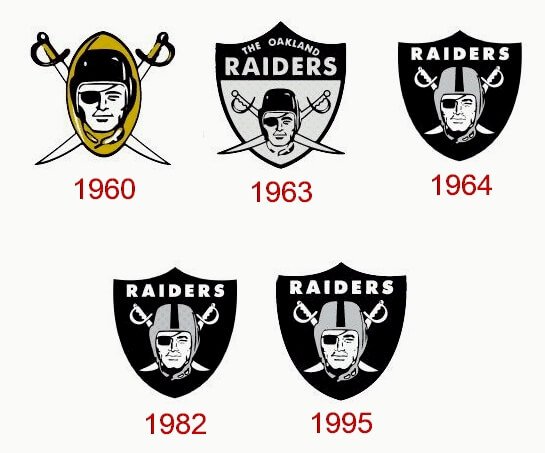For many football followers, the name "Raiders" brings to mind a powerful, distinctive brand, yet its city connection has shifted quite a bit over the years. It's a question that often pops up, like, "Why did the LA Raiders change their name?" It's not just a simple name change; it's a story of movement, of cities, and of the business of professional sports. The team's journey has been a long one, full of interesting turns and different homes.
The Raiders have called a few places home, starting out in Oakland, then heading to Los Angeles, and then, rather surprisingly, making their way back to Oakland before settling in Las Vegas. This history of moving around can be a bit confusing for folks just trying to keep up with their favorite teams. It makes you wonder, you know, what prompts such big changes for a well-known sports team?
This article will explore the path the Raiders took, looking at the reasons behind their various relocations. We'll get into the specifics of why they left Los Angeles, why they went back to Oakland, and why they ultimately decided to put down roots in Las Vegas. It's a story that, in some respects, shows how complex the relationship can be between a team, its city, and its fans.
Table of Contents
- The Raiders' Roaming History: A Brief Look
- Leaving Oakland (The First Time): A Move to Los Angeles
- The Return to Oakland: Hopes and Hurdles
- The Las Vegas Venture: A New Home for the Raiders
- Understanding the "Why": Key Factors Behind the Moves
- Fan Loyalty and the Impact of Relocation
- Frequently Asked Questions About the Raiders' Moves
The Raiders' Roaming History: A Brief Look
The Raiders began their professional football life in Oakland, California, way back in 1960, as part of the American Football League. They quickly became a team with a strong identity, known for their rebellious spirit and their silver and black colors. For a good chunk of time, Oakland was their true home, a place where they built a passionate fan base and achieved considerable success, including a Super Bowl victory.
But then, you know, things started to get a bit complicated. The team's long-time owner, Al Davis, was always looking for the best situation for his team, and that sometimes meant looking beyond Oakland. This led to their first big move, taking them away from their original city and into the bustling atmosphere of Los Angeles. It was a pretty significant shift for the team and its followers, leaving many wondering about the future.
After a period in Los Angeles, the team, rather remarkably, made its way back to Oakland. This return was met with a lot of excitement, a feeling that the Raiders were coming home. Yet, that second stint in Oakland also proved to be temporary. The team eventually packed up again, this time for a completely new setting in Las Vegas. It's quite a journey for a sports franchise, moving across the state and then into a different one entirely.
Leaving Oakland (The First Time): A Move to Los Angeles
The initial decision to leave Oakland for Los Angeles in 1982 was, in essence, a direct result of ongoing disagreements about a new stadium. Al Davis, the team's fiercely independent owner, felt the Oakland Coliseum was no longer adequate for a professional football team. He was looking for modern facilities, which included things like luxury suites and more seating capacity, elements that were becoming pretty standard in other NFL venues. The Coliseum, you see, just wasn't keeping up with the times.
There were also, apparently, some legal battles between the Raiders and the city of Oakland. These disputes centered around the stadium and the team's desire for improvements that weren't happening fast enough, or at all. Davis believed the team needed to control its own destiny, especially concerning its home field. He felt that the city wasn't doing enough to make the Raiders a competitive business in the modern NFL landscape. This constant back-and-forth created a lot of tension, making a move seem more and more likely.
Los Angeles, at the time, offered a very appealing alternative. The Los Angeles Memorial Coliseum, while also an older stadium, was a much larger venue and, perhaps more importantly, the city was eager to bring an NFL team back after the Rams had moved to Anaheim. The promise of a larger market, more corporate sponsorship opportunities, and a fresh start in a major city was very attractive. So, after much discussion and legal wrangling, the Raiders packed their bags and became the Los Angeles Raiders, a name that stuck for over a decade.
The Return to Oakland: Hopes and Hurdles
After spending 13 seasons in Los Angeles, the Raiders, rather surprisingly, decided to return to Oakland in 1995. This move was largely driven by a combination of factors, including the strong emotional connection many fans still had to the team in Oakland, and the city's renewed efforts to bring them back. Oakland really wanted their team home, and they put together a deal that, at the time, seemed to address some of the team's needs. It was, in a way, a homecoming that many had wished for.
However, the return wasn't without its challenges, and some of the same issues that led to their initial departure resurfaced. The Oakland Coliseum, even with some upgrades, still wasn't a truly modern NFL stadium. The team continued to face limitations in terms of revenue generation compared to other teams with newer facilities. There were, you know, still ongoing talks about building a new stadium, but these discussions often stalled, creating a sense of uncertainty for the team's long-term future in the city.
Despite the passionate fan base that welcomed them back, the financial realities of the NFL were changing rapidly. Teams needed state-of-the-art venues to compete effectively, not just on the field, but also in terms of income. The Raiders, it seemed, were still struggling to find that ideal situation in Oakland. This persistent problem with the stadium, as a matter of fact, kept the door open for another potential move down the line, even after their celebrated return.
The Las Vegas Venture: A New Home for the Raiders
The decision to move the Raiders from Oakland to Las Vegas, which became official for the 2020 season, was the culmination of many years of searching for a permanent, modern home. This time, the allure of Las Vegas was, like, very strong, offering something truly special: a brand-new, state-of-the-art stadium. Allegiant Stadium, with its sleek design and all the modern amenities a team could want, was a huge draw. It promised the Raiders a competitive edge in terms of revenue and fan experience.
Beyond the stadium itself, Nevada offered significant financial incentives to attract the team. Public funding played a substantial role in building Allegiant Stadium, which was a key factor for the Raiders' ownership. This kind of financial backing from a city or state is often a critical piece of the puzzle when teams consider relocating. It’s a huge investment, and the support from the local government made the Las Vegas option incredibly appealing.
Moreover, Las Vegas represented a completely new market for the NFL. It's a city known for entertainment and tourism, and the league saw an opportunity to tap into that vibrant atmosphere. The idea of having an NFL team in a city like Vegas was, frankly, a unique proposition, promising new fan bases and corporate partnerships. So, after years of trying to secure a viable stadium solution in Oakland, the move to Las Vegas provided a fresh start and a very different kind of home for the Raiders.
Understanding the "Why": Key Factors Behind the Moves
When you look at the Raiders' history of moving, it becomes pretty clear that a few key factors consistently drove these decisions. It's not just one thing, but a combination of influences that, you know, tend to push teams to seek new homes. These factors are often at the heart of many professional sports team relocations, not just for the Raiders.
First and foremost, **stadium infrastructure** plays a huge role. Old stadiums, like the Oakland Coliseum, simply couldn't generate the kind of revenue that modern venues could. Teams need luxury suites, club seating, and updated concession areas to compete financially in today's NFL. Without these, a team can feel like it's falling behind. It's a bit like trying to run a cutting-edge tech company out of an old, rundown office building; it just doesn't work as well.
Then there are the **financial incentives** offered by cities. Local governments and private investors often put together attractive packages, including public funding for stadium construction, tax breaks, and other financial benefits, to lure teams. For a team owner, these incentives can make a massive difference in the team's profitability and long-term stability. The offer from Las Vegas, for example, was very substantial and certainly helped seal the deal.
Another important aspect is **market size and opportunity**. Sometimes, a team might look for a larger market to expand its fan base and attract more corporate sponsorships. Other times, it might seek an underserved market where it can become the primary sports attraction. Las Vegas, in a way, offered both: a growing metropolitan area and a chance to be the first major professional sports team in a truly unique entertainment hub. The team was, you know, pretty much looking for new avenues for growth.
The **owner's vision** also plays a critical part. Both Al Davis and his son Mark Davis have always been driven by a desire to provide the Raiders with the best possible facilities and ensure the team's financial health. They were always looking for the optimal situation, even if that meant moving. Their commitment to the team's long-term success often meant making tough decisions that, frankly, impacted thousands of fans.
Finally, **legal and political disputes** with local governments often pave the way for a move. When a team and a city can't agree on stadium deals, leases, or public funding, the relationship can sour. These disagreements can drag on for years, creating an environment where relocation becomes the most viable option. It's often a very drawn-out process, full of negotiation and, sometimes, frustration.
Fan Loyalty and the Impact of Relocation
The story of the Raiders' moves is also, very much, a story about fan loyalty and the deep emotional connections people have with their sports teams. For the fans in Oakland, especially, the repeated departures were incredibly tough. They had cheered for the Raiders for decades, through thick and thin, and to see their team leave, not once, but twice, was a pretty heartbreaking experience for many. It's hard to describe the feeling when your team, like, just picks up and goes.
When the team moved to Los Angeles, it gained new fans, but it also left a void in Oakland. Then, when they returned, there was a huge outpouring of support, a real sense of rekindled hope. But that, too, was temporary. The final move to Las Vegas meant another group of loyal fans had to say goodbye to their team, or try to follow them to a new city. It shows how, you know, fan dedication can be tested by the business side of sports.
Despite the physical relocation, the "Raider Nation" identity, in some respects, transcends geography for many. The silver and black colors, the iconic shield logo, and the team's rebellious image have a strong hold on people, no matter where the team plays. Fans often find ways to support their team, even from a distance, or they embrace the new location as part of the team's evolving story. It's a testament to how powerful sports can be in people's lives.
Frequently Asked Questions About the Raiders' Moves
Why did the Raiders leave Oakland for Las Vegas?
The Raiders left Oakland for Las Vegas primarily because they couldn't secure a deal for a new, modern stadium in Oakland. The Oakland Coliseum was one of the oldest stadiums in the NFL, lacking the amenities and revenue-generating opportunities that teams now consider essential. Las Vegas, on the other hand, offered a significant public funding package for the construction of Allegiant Stadium, a state-of-the-art facility, and presented a new, exciting market opportunity for the team. It was, frankly, a much more appealing financial and infrastructure deal.
When did the Raiders officially become the Las Vegas Raiders?
The Raiders officially became the Las Vegas Raiders when they began playing their home games at Allegiant Stadium in Las Vegas for the 2020 NFL season. While the approval for the move happened a few years prior, the 2020 season marked their first official games as the Las Vegas Raiders, a significant moment for the franchise and the city. It was, you know, a very anticipated debut in their new home.
Did the Raiders ever consider staying in Oakland before moving to Las Vegas?
Yes, the Raiders did consider staying in Oakland and engaged in extensive negotiations with the city and Alameda County for many years. There were various proposals for new stadiums or significant renovations to the Coliseum, but none of these plans ever materialized into a firm, viable agreement that satisfied the team's ownership. The inability to reach a long-term stadium solution in Oakland was, essentially, the main reason they ultimately pursued relocation options, with Las Vegas emerging as the most attractive alternative. It was a long, drawn-out process, and, as a matter of fact, many efforts were made.
Learn more about NFL team history on our site, and link to this page



